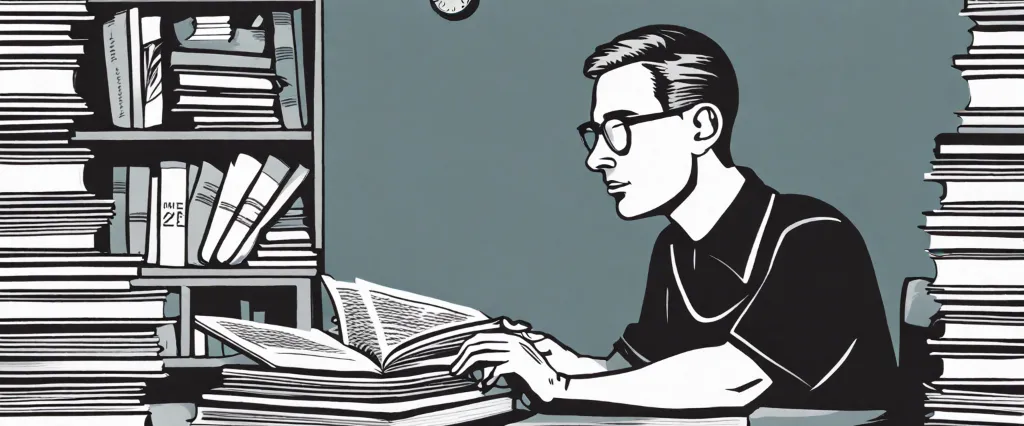The Chicago Manual of Style by University of Chicago Press, published by the University of Chicago Press, is a comprehensive resource widely regarded as the go-to guide for writers, editors, and publishers seeking authoritative guidance on style, grammar, and citation. With its meticulous attention to detail and clear explanations, this manual has become the gold standard in the field of writing and publishing. Authored by a team of experts from the University of Chicago Press, the book provides indispensable advice on various writing conventions and citation formats, ensuring that writers can effectively communicate their ideas while adhering to the highest standards of clarity and professionalism.
Chapter 1:Comprehensive guide to writing, editing, and publishing standards
Chapter 1 of The Chicago Manual of Style, titled “Comprehensive guide to writing, editing, and publishing standards,” provides an overview of the manual and its purpose. Published by the University of Chicago Press, this book is a renowned guide for professional writers, editors, and publishers.
The chapter begins by emphasizing the importance of consistent and clear writing in the fields of academia, publishing, and beyond. It highlights the fact that the Chicago Manual of Style is a comprehensive resource that covers various aspects of writing, editing, and publishing, including grammar, punctuation, usage, citations, and manuscript preparation.
The chapter then explains the structure of the manual, which is divided into three main parts: The Publishing Process, Style and Usage, and Documentation. Each part contains several chapters that delve deeper into specific topics. This organizational structure allows users to easily locate information on specific writing or publishing concerns.
Additionally, the chapter introduces the concept of style sheets, which are essential tools for consistency in publishing. Style sheets help writers and editors adhere to specific guidelines regarding punctuation, capitalization, abbreviations, and more.
The chapter concludes by emphasizing the role of the Chicago Manual of Style as a trusted authority in the field of writing and publishing. It underscores the need for writers, editors, and publishers to consult the manual for guidance, ensuring their work meets established standards.
In summary, Chapter 1 of The Chicago Manual of Style provides an introduction to the importance and structure of the manual. It underscores the need for consistent writing and highlights the role of the manual as a comprehensive resource for professionals in the field of writing, editing, and publishing.
Chapter 2: Authoritative reference for academic and professional writing
Chapter 2 of “The Chicago Manual of Style” focuses on the importance of having authoritative references in academic and professional writing. The chapter highlights the role of citations in providing readers with accurate and trustworthy sources.
The chapter begins by emphasizing the significance of using references to support arguments, clarify information, and give credit to other authors for their ideas and research. It stresses the need to consult reliable sources, such as books, scholarly journals, and reputable websites, to ensure the credibility of the information being presented.
The chapter then outlines the elements of a citation, including the author’s name, title of the work, publication date, and relevant page numbers. It further discusses different citation styles, such as footnotes, endnotes, and in-text citations, and advises writers on how to choose the appropriate style for their field and audience.
Moreover, the chapter delves into the topic of plagiarism and the importance of avoiding it by properly citing all sources. It provides guidelines on how to quote and paraphrase correctly, as well as how to attribute ideas to their respective authors.
Additionally, the chapter explains the role of bibliographies and reference lists in academic writing. It offers guidance on formatting these lists, organizing entries alphabetically, and including the necessary information for each source.
Finally, the chapter addresses the use of electronic sources, discussing how to cite online documents, blogs, and social media posts.
In summary, Chapter 2 of “The Chicago Manual of Style” stresses the significance of authoritative references in academic and professional writing. It provides guidelines for accurately citing sources, avoiding plagiarism, and creating comprehensive bibliographies.
Chapter 3:Clear guidelines for citation and bibliography formatting
Chapter 3 of The Chicago Manual of Style, titled “Clear Guidelines for Citation and Bibliography Formatting,” provides comprehensive guidelines on how to accurately cite and format sources in scholarly writing. The chapter focuses on the two primary systems of citation used within academic and publishing contexts: the notes-bibliography system and the author-date system.
The notes-bibliography system, commonly used in the humanities, involves the use of footnotes or endnotes to cite sources and a corresponding bibliography page. The chapter details the correct formatting of notes for various types of sources, including books, journal articles, websites, and legal documents. It also offers guidance on how to cite specific elements of sources, such as chapter titles within edited books, or specific pages within a larger work.
Meanwhile, the author-date system, often employed in the natural and social sciences, utilizes in-text parenthetical citations and an accompanying reference list. This system enables readers to easily locate the complete bibliographic information for each cited source. The chapter outlines the proper formatting of author-date citations for different source types, covering the use of direct quotations, paraphrases, and summarization.
In addition to explaining the mechanics of citation, the chapter addresses related topics such as the use of abbreviations, providing guidance on when and how to use them. It also covers the creation of annotated bibliographies, which provide brief summaries or evaluations of cited sources and are widely used in research projects.
Overall, Chapter 3 of The Chicago Manual of Style serves as a valuable resource, providing clear and detailed guidelines for accurately citing and formatting sources across various disciplines. By following these guidelines, researchers can ensure their work is properly documented, respected, and easily accessible to others.
Chapter 4:Essential resource for manuscript preparation and publication process

Chapter 4 of The Chicago Manual of Style, titled “Essential Resource for Manuscript Preparation and Publication Process,” provides valuable guidance for authors and editors in preparing their manuscripts for publication. This chapter serves as a comprehensive reference, covering various aspects of manuscript preparation, including formatting, style, citations, and proofreading.
The chapter begins by highlighting the importance of adhering to consistent formatting guidelines throughout the manuscript. It offers detailed instructions on font style, size, and alignment, as well as proper use of headings, subheadings, and page numbers. The authors emphasize the need for uniformity to enhance readability and establish a professional appearance.
Moving on to style guidelines, the chapter delves into grammatical and syntactical rules, addressing issues such as punctuation, capitalization, and the use of italics and quotation marks. It provides specific rules for various textual elements, such as abbreviations, names, titles, and numbers.
Citation is a crucial aspect of manuscript preparation, and this chapter offers detailed guidelines for both the notes and bibliography style and the author-date style. It presents rules for in-text citations, footnotes, endnotes, and creating a bibliography, ensuring proper attribution of sources.
Proofreading is given due attention in this chapter, with suggestions on how to effectively review and edit manuscripts to catch errors, improve consistency, and enhance clarity. The chapter advises authors and editors on proofreading techniques, such as reading the text aloud or enlisting the help of a second reader.
In summary, Chapter 4 of The Chicago Manual of Style serves as an indispensable resource for manuscript preparation and publication. By providing clear guidelines on formatting, style, citations, and proofreading, it equips authors and editors with the knowledge necessary to create polished, professional manuscripts for publication.
Chapter 5:Covers grammar, punctuation, and stylistic conventions in detail
Chapter 5 of The Chicago Manual of Style, published by the University of Chicago Press, is a comprehensive guide to grammar, punctuation, and stylistic conventions. This chapter aims to provide writers, editors, and researchers with a detailed understanding of these fundamental elements of effective writing.
The chapter begins by discussing grammatical rules, including guidelines for sentence structure and word usage. It emphasizes the importance of clarity and consistency in writing, offering recommendations for avoiding ambiguous or convoluted sentences. Additionally, it provides insights into commonly misunderstood grammatical concepts and suggests resources for further learning.
Moving on to punctuation, the chapter covers a wide range of punctuation marks and their specific usage. It delves into the correct application of commas, semicolons, colons, dashes, and quotation marks, among others. It provides examples and explanations to ensure accurate and appropriate use of these marks in different contexts.
Furthermore, the chapter delves into stylistic conventions, such as capitalization, italics, and hyphenation. It offers guidance on when and how to capitalize specific words, titles, and headings. It also discusses the appropriate use of italics for emphasis, titles of works, and foreign words, while outlining clear rules for hyphenation in compound words.
Throughout the chapter, The Chicago Manual of Style demonstrates a deep understanding of language and presents clear and concise guidance. Its meticulous approach ensures that writers can produce polished, professional, and coherent written works. By providing detailed explanations, examples, and suggestions for further reading, this chapter serves as an indispensable resource for anyone aiming to improve their grammar, punctuation, and stylistic conventions.
Chapter 6:Addresses legal and ethical issues in writing and publishing
Chapter 6 of The Chicago Manual of Style, titled “Addresses Legal and Ethical Issues in Writing and Publishing,” delves into the important considerations and guidelines for writers, editors, and publishers with regards to legal and ethical concerns.
The chapter begins by emphasizing the significance of respecting copyright laws and protecting intellectual property. It explains the need for authors and publishers to obtain permission from copyright holders to reproduce or quote their work, highlighting fair use exceptions and providing guidelines on how to credit and cite sources properly.
Furthermore, the chapter delves into issues related to defamation and libel, cautioning writers to be mindful of making false statements that can harm someone’s reputation. It highlights the importance of verifying facts, providing balanced opinions, and being conscious of potential legal consequences when writing about individuals and organizations.
The chapter also touches upon privacy concerns, discussing how authors should handle sensitive personal information, especially when writing biographies or memoirs. It advises writers on navigating ethical dilemmas by seeking consent, respecting boundaries, and using discretion when discussing private matters.
Additionally, the chapter addresses issues related to plagiarism and self-plagiarism, stressing the importance of giving proper credit to sources and avoiding recycling one’s own previous work without acknowledgment.
Lastly, the chapter offers guidance on ethical considerations in the publishing process, such as the responsibility to present accurate information, disclose potential conflicts of interest, and avoid unethical practices in marketing and book promotion.
In summary, Chapter 6 of The Chicago Manual of Style provides valuable insights into the legal and ethical complexities that writers and publishers face. It emphasizes the need to respect copyright laws, exercise caution when discussing individuals or organizations, handle personal information with care, avoid plagiarism, and maintain ethical standards throughout the publishing process.
Chapter 7:Offers guidance on manuscript editing and proofreading techniques
Chapter 7 of The Chicago Manual of Style, published by the University of Chicago Press, focuses on providing guidance and techniques for manuscript editing and proofreading processes. In this chapter, the authors aim to ensure that the final version of a manuscript is accurate, consistent, and error-free.
The chapter begins by emphasizing the importance of editing and proofreading as essential steps in the publishing process. It highlights the role of editors in improving clarity, coherence, grammar, and style of a manuscript while also ensuring adherence to the specific guidelines outlined by The Chicago Manual of Style.
The chapter then delves into the details of proofreading techniques. It outlines the systematic process of reviewing a manuscript, starting from checking spelling, capitalization, and punctuation errors to analyzing sentence structure, grammar, and syntax. The authors emphasize the need for meticulous attention to detail.
Furthermore, the chapter covers important aspects of manuscript editing, including copy editing and content editing. It discusses copy editing, which involves correcting errors, clarifying meaning, improving flow, and eliminating inconsistencies. On the other hand, content editing focuses on evaluating the organization, structure, and overall effectiveness of the manuscript as a whole.
The authors also provide useful tips and strategies for efficient editing and proofreading, such as taking breaks to maintain focus and using reference materials and style guides for guidance. They stress the importance of collaborating with authors and maintaining good communication throughout the editing process.
In summary, Chapter 7 of The Chicago Manual of Style serves as a comprehensive guide for both novice and experienced editors and proofreaders. It emphasizes the significance of careful editing and thorough proofreading to ensure high-quality manuscripts that meet the standards outlined by The Chicago Manual of Style.

Chapter 8: Trusted manual for maintaining consistency and clarity in written works
Chapter 8 of The Chicago Manual of Style, titled “Grammar and Usage,” provides writers with a trusted manual for maintaining consistency and clarity in their written works. The chapter begins by emphasizing the importance of following grammar rules to effectively communicate ideas.
The chapter offers guidance on various aspects of grammar and usage, including sentence structure, punctuation, verb tenses, and word choice. It emphasizes the need for clear and concise sentences to maintain the reader’s attention. The authors provide examples and explanations to illustrate proper grammar usage while also addressing common errors and misconceptions.
In terms of punctuation, the chapter delves into the correct use of commas, semicolons, dashes, and parentheses. It offers insights into when and how to use each punctuation mark appropriately, reducing ambiguity and enhancing comprehension.
The authors also provide guidance on verb tense consistency, highlighting the importance of maintaining consistency throughout a piece of writing. They offer tips for handling shifts in time frames when necessary and provide examples to clarify the recommended approach.
Furthermore, the chapter covers aspects of word choice, emphasizing precision and avoiding ambiguity. It provides guidelines for capitalization, abbreviations, and the proper use of hyphens.
Throughout the chapter, the authors stress the importance of maintaining a consistent and clear writing style. They encourage writers to consider their target audience and adjust their language accordingly. By following the guidelines presented in this chapter, writers can strengthen their work’s clarity and coherence.
In conclusion, this chapter of The Chicago Manual of Style serves as a trusted manual for writers seeking to maintain consistency and clarity in their written works. By providing guidance on grammar, punctuation, verb tense consistency, and word choice, the authors equip writers with the tools necessary to enhance comprehension and effectively communicate their ideas.
After Reading
In conclusion, “The Chicago Manual of Style” by the University of Chicago Press is an invaluable resource for writers, editors, and anyone involved in the publishing process. This comprehensive guide provides detailed instructions and guidelines on all aspects of writing, from grammar and punctuation to citation styles and manuscript preparation. The book is a trusted authority in the publishing industry, offering clear and concise explanations that help ensure consistency and accuracy in writing. Whether one is a student, a professional writer, or an enthusiast, “The Chicago Manual of Style” is an essential tool for anyone seeking to improve their writing skills and maintain high standards in their written work.
1. “The Elements of Style” by William Strunk Jr. and E.B. White – This classic guide offers clear and concise advice on grammar, punctuation, and style. It provides essential principles and rules that can be applied to any writing, making it a valuable resource for writers of all levels.
2. “Eats, Shoots & Leaves: The Zero Tolerance Approach to Punctuation” by Lynne Truss – This humorous and informative book focuses on the importance of punctuation in writing. Truss explores common punctuation errors and provides fun anecdotes to illustrate the impact of punctuation on meaning, making it an entertaining read for language enthusiasts.
3. On Writing: A Memoir of the Craft” by Stephen King – This memoir-cum-writing guide by acclaimed author Stephen King delves into his own writing journey, offering practical advice and tips along the way. This book is a must-read for aspiring writers, as King shares valuable insights on storytelling, character development, and overcoming writing challenges.
4. The “Publication Manual of the American Psychological Association” by the American Psychological Association is a definitive guide for writing and publishing in the social and behavioral sciences. It offers guidelines for writing research papers, citing sources, and presenting data, ensuring accuracy and consistency in scholarly communication.
5. The “MLA Handbook” by The Modern Language Association of America is a comprehensive guide for academic writing and citation in the humanities. It provides clear instructions on formatting papers, citing sources, and writing research papers, making it an essential resource for students and scholars in the humanities.
These books, like “The Chicago Manual of Style,” offer valuable guidance and insights for both professional writers and those looking to improve their writing skills. Whether you’re interested in grammar, punctuation, storytelling, or general writing advice, these recommendations provide invaluable resources to enhance your writing abilities.




